Noteworthy Trees
The Bicentennial Oak
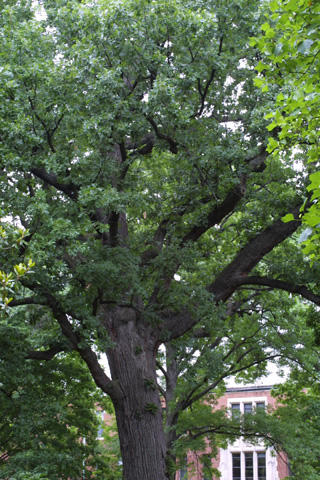 This famous tree was one of the few that is known to predate the campus. It was in the yard of the farmhouse which is the building now known as “Old Main”. It was located in the greenspace in front of Rand Hall.
This famous tree was one of the few that is known to predate the campus. It was in the yard of the farmhouse which is the building now known as “Old Main”. It was located in the greenspace in front of Rand Hall.
The Tennessee state champion Japanese Zelkova tree
 This tree was planted by Bishop McTyeire, who talked Commodore Vanderbilt into donating the money to found the university,
This tree was planted by Bishop McTyeire, who talked Commodore Vanderbilt into donating the money to found the university,
served as chair of the board of trust for life, and was instrumental in planting many trees on campus after its founding.
It’s located near the Owen School and the Law Library.
Southern Red Oak
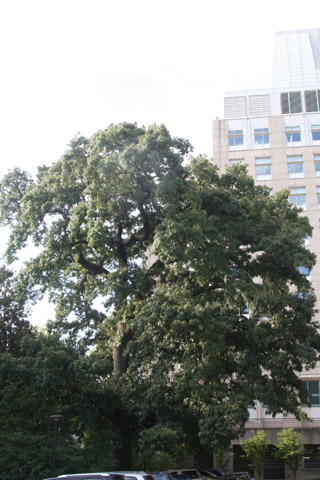 This giant is the only one of its species on campus and was probably planted soon after the university was started in 1873.
This giant is the only one of its species on campus and was probably planted soon after the university was started in 1873.
It stands in front of the Nursing School and is noticed by all who walk from Peabody to Main Campus via the pedestrian bridge.
September Elm
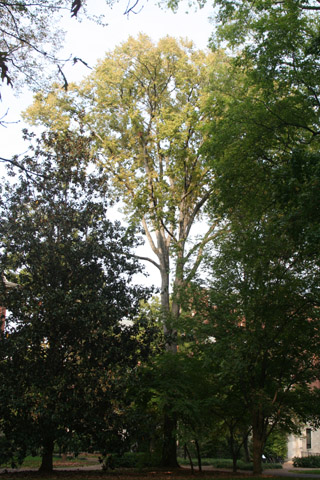 September elms are common only in Tennessee and surrounding states. This tree is probably one of the largest on the planet of its species and is protected from Dutch elm disease by the Vandy tree crew who keep all dead wood trimmed from the elms on campus. It stands between Benson and Garland Halls.
September elms are common only in Tennessee and surrounding states. This tree is probably one of the largest on the planet of its species and is protected from Dutch elm disease by the Vandy tree crew who keep all dead wood trimmed from the elms on campus. It stands between Benson and Garland Halls.
Big Al
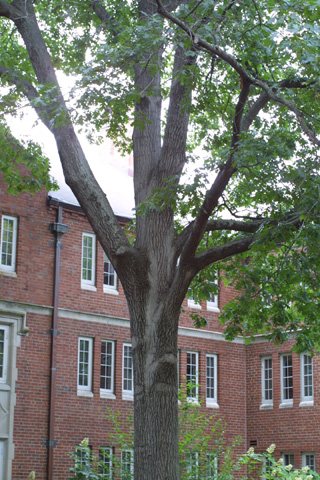 This big Shumard oak is probably the only tree on campus that has a name: “Big Al”. It stands in front of Cole Hall.
This big Shumard oak is probably the only tree on campus that has a name: “Big Al”. It stands in front of Cole Hall.
The Female Persimmon
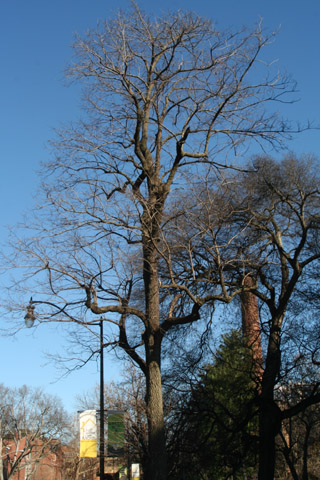 In late fall, this tree is one of the few places on campus where you can get a free snack. The fruit is a bit seedy, but is tasty plain or made into pudding (wash fruit before partaking!). You can find it in front of Branscomb Quadrangle.
In late fall, this tree is one of the few places on campus where you can get a free snack. The fruit is a bit seedy, but is tasty plain or made into pudding (wash fruit before partaking!). You can find it in front of Branscomb Quadrangle.
Galloway’s Ginkgo
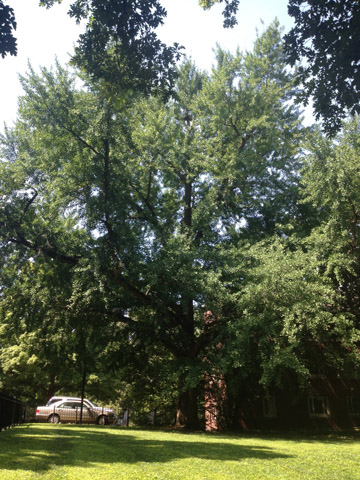 Ginkgo is also known as the maidenhair tree for the pattern on its distinctive leaves which turn a beautiful yellow in the fall. It was only known to Europeans as a fossil until they found it on temple grounds in Asia. According to The Trees of Vanderbilt, Bishop Galloway, brought this one from Asia in the early 1900’s. However, this big fellow is probably not (as the book says) the progenitor of many area ginkgoes because it’s a male!
Ginkgo is also known as the maidenhair tree for the pattern on its distinctive leaves which turn a beautiful yellow in the fall. It was only known to Europeans as a fossil until they found it on temple grounds in Asia. According to The Trees of Vanderbilt, Bishop Galloway, brought this one from Asia in the early 1900’s. However, this big fellow is probably not (as the book says) the progenitor of many area ginkgoes because it’s a male!
The Female Ginkgo
I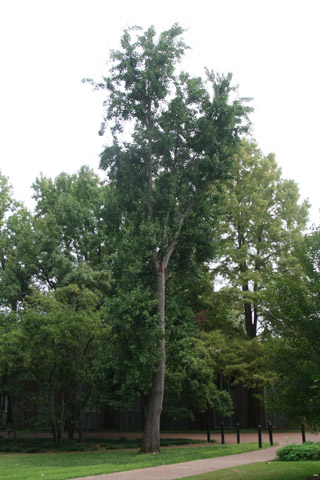 t’s late spring and you are wondering, “What’s that awful smell?” Is it vomit? No, it’s the strange cones of the female cones of the ginkgo squashed on the ground below the tree. When most homeowners discover that their ginkgo has grown up to be a stinky female, they cut it down. That’s why there are only two (surviving) female ginkgos on campus. This one is by the Owen School and the Law Library.
t’s late spring and you are wondering, “What’s that awful smell?” Is it vomit? No, it’s the strange cones of the female cones of the ginkgo squashed on the ground below the tree. When most homeowners discover that their ginkgo has grown up to be a stinky female, they cut it down. That’s why there are only two (surviving) female ginkgos on campus. This one is by the Owen School and the Law Library.
